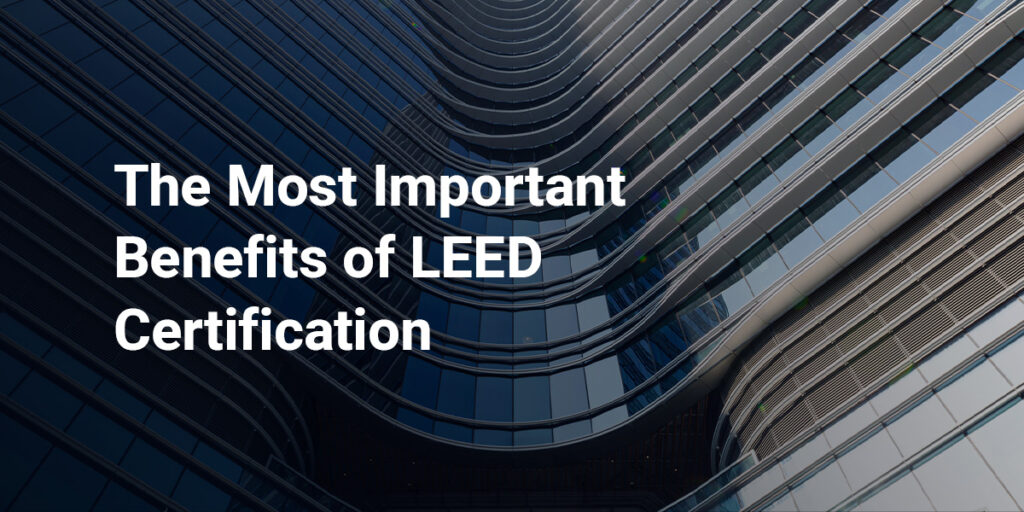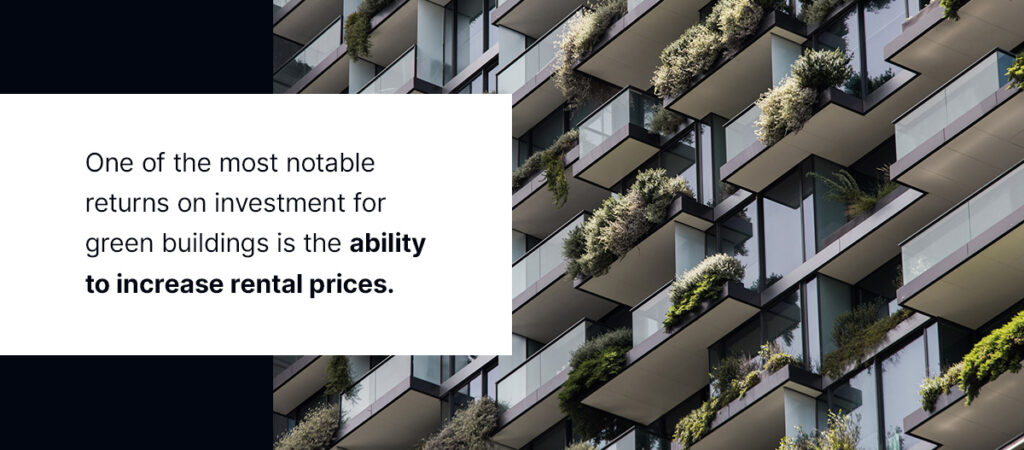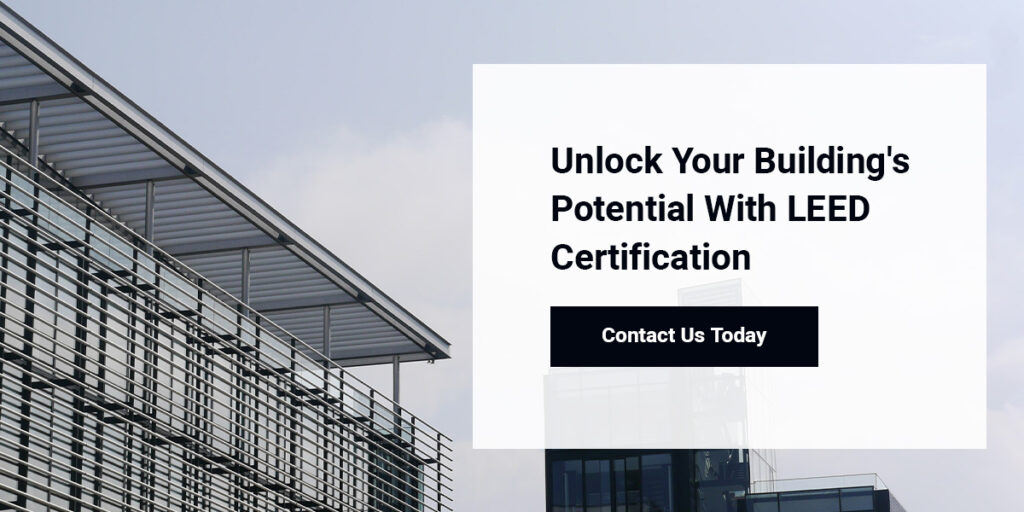


As sustainability becomes a growing priority in real estate and construction, earning LEED certification can set your project apart by demonstrating a commitment to environmental sustainability. Beyond their positive impact on the environment, LEED-certified buildings can significantly reduce operating costs, improve water and energy efficiency and create healthier, more comfortable spaces for occupants.
Gaining insight into what a LEED certification is and what “LEED” stands for will ensure you follow proper protocol and make the right choices to prioritize your building’s environmental footprint.
The “LEED” in LEED Certification stands for “Leadership in Energy and Environmental Design (LEED)”. The Leadership in Energy and Environmental Design (LEED) is a globally recognized certification system for green building practices developed by the United States Green Building Council. LEED provides a framework for building projects to implement sustainable construction, design, maintenance and operational strategies. The certification process evaluates how a building performs in terms of water conservation, energy efficiency, indoor environmental quality and waste reduction.
A LEED-certified building meets stringent standards for sustainability and environmental sustainability. These buildings use resources more efficiently, resulting in a lower environmental impact. The LEED framework includes various certifications based on project type, including building design and construction, interior building design and construction, building operations and maintenance, and more.
LEED certification is offered depending on how many points a project earns across various categories, called “credit categories”:
There are four levels of certification buildings can obtain:
There are several advantages of LEED certification for your projects. From environmental impact to financial savings to improved tenant well-being, LEED-certified buildings are an appealing option for investors, owners and tenants alike.
LEED-certified buildings use advanced materials and systems to reduce energy consumption. These can include new heating, ventilation and air conditioning (HVAC) systems, renewable energy sources, and LED lighting. This leads to lower utility bills and long-term savings for stakeholders. On average, LEED buildings use 18% to 39% less energy than non-LEED buildings.
LEED buildings significantly reduce greenhouse gas emissions through their improved energy and water efficiency, waste management practices and sustainable material use — existing LEED-certified buildings produce significantly fewer greenhouse gases. This reduction contributes to environmental preservation and lowers the property’s overall carbon footprint.
LEED buildings save on waste, water and energy overheads, resulting in lower overall operating expenses when compared to conventional buildings. These buildings have been shown to save millions in expenses, including:

LEED-certified properties are often more competitively priced due to their reduced operating costs, leading to higher resale value. These buildings also tend to attract more tenants, experiencing faster lease-up rates due to their operational and environmental advantages. One of the most notable returns on investment for green buildings is the ability to increase rental prices.
LEED projects reduce waste during construction and operation through composting and recycling. By diverting millions of tons of waste from landfills and promoting sustainable material use, LEED project initiatives contribute to improved waste management.
Along with the federal government, many state jurisdictions offer tax breaks or financial incentives and reduced permit fees for LEED-certified buildings. Examples include:
This assistance makes certification a cost-effective choice for owners and developers. As federal policies increasingly support green technology, additional tax incentives for energy-efficient commercial buildings are likely in the future.
One of the standout features of LEED certification is the rigorous standards for tracking a building’s water, energy and resource performance. This focus delivers reliable data that supports long-term sustainability and operational improvements. Additionally, building owners can demonstrate to tenants and stakeholders alike how the effectiveness of their sustainability initiatives.
With over 100,000 certified projects across the globe, LEED is the leading green building certification system, offering proven results and third-party verification that give stakeholders confidence in your project’s sustainability. A LEED certification can add significant value to your property, standing out as part of a globally recognized effort that sets the tone for future builds.
LEED certification helps building owners and investors meet their environmental, social and governance goals by providing a reliable and recognized framework for sustainability. This certification also provides a framework for managing and measuring building performance in a way that supports sustainability and attracts socially conscious investors. Obtaining LEED certification for your project or property also enhances your organization’s reputation and demonstrates corporate responsibility and environmental stewardship.
By emphasizing air quality, natural light and comfortable indoor temperatures, LEED buildings create healthier, more pleasant spaces. These properties often incorporate features like enhanced ventilation systems, low-volatile organic compound materials and abundant daylight. LEED properties also use strategies for better moisture control that include drainage systems, building envelope design and using materials resistant to mold growth.
These benefits create indoor environments that improve occupant well-being and productivity.
So, is LEED certification worth it? Short answer: yes, absolutely. LEED certification can lower your operational costs, boost property value and create healthier indoor environments for occupants. Professional LEED consulting services can streamline your certification process and further maximize your building’s potential for achieving higher certification levels.
CSI Engineering offers LEED consulting services tailored to project-specific needs. Our accredited engineers have vast experience in LEED projects, from energy modeling to gap analysis. The LEED services we offer include Green Globes consulting, WELL consulting, sustainable design and more. Our experts will guide your project teams through complex documentation, material selection and energy modeling, ensuring you meet all relevant LEED requirements. View our LEED project portfolio to see examples of our LEED consulting work.
Whether you’re taking on a new project or want to obtain certification for existing buildings following the LEED-EBOM rating system, CSI Engineering is ready to assist with consulting, as well as full mechanical, electrical, plumbing and fire protection engineering services. Reach out to us today for a proposal.
